Zapis je na voljo tudi v slovenščini
You have probably heard of account-based marketing, it is not a new strategy, but it has gained popularity in recent years due to new technologies and the possibilities they offer. Actuado recently hosted a webinar (in Slovenian) where Jasna Suhadolc talked about what exactly account-based marketing is, who it is for and how to approach it.
What is account-based marketing?
Account-based marketing (ABM) is a B2B strategy where we treat individual prospects or existing buyers as separate markets. We tailor the content, events and campaigns to potential buyers of a single company rather than the entire industry. As such, ABM is a highly focused growth approach where it’s crucial that marketing and sales work together to provide a better buying experience for high value accounts.
What makes ABM different from traditional and inbound marketing is the upper part of the sales funnel. Instead of targeting broadly in order to attract as many potential customers as possible, ABM focuses on individual key accounts and personalizes communication for them. This means that the number of leads we get is lower, but they are much more qualified.
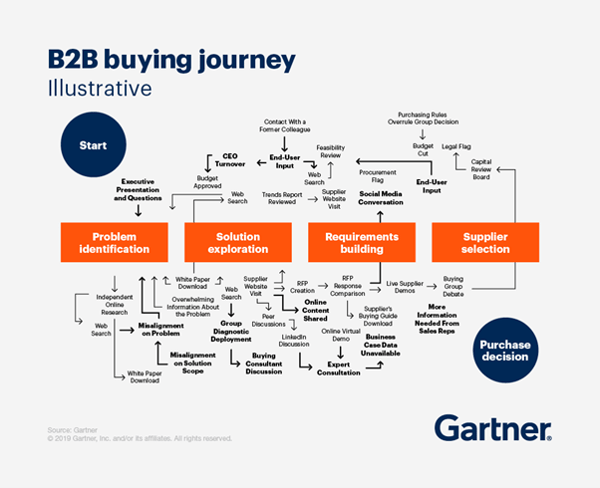
Complex decision making in the B2B environment
In the B2B environment we typically deal with long sales cycles (they can last several years), large and complex deals (sometimes in the millions) and multiple stakeholders that influence the buying decision (marketing lead as budget holder, IT lead as blocker, marketing expert as champion, etc.).
The Gartner example above neatly illustrates the complexity of B2B buying journey. Since so many people have a say in the process, you need to get as close as possible to the people in your target company. This requires a personalized engagement where ABM and inbound marketing complement each other perfectly. After all, they have the same goal: to win more deals and improve the buying experience.
Buyer personas vs. ICP (Ideal Customer Profile)
One of the most important part of inbound marketing are buyer personas – representations of our ideal customers that help us create content that will speak to our audience. In ABM, we create an Ideal Customer Profile (ICP), a description of the company that would be a perfect fit for our solution (by size, number of employees, location, budget, etc.), while the buyer persona corresponds to the role each person plays in the buying decision (blockers, decision makers, influencers, budget holders, sponsors, legal and compliance). People can have more than one buying role, but the key is to create different content that addresses the pain points of the different buying roles.
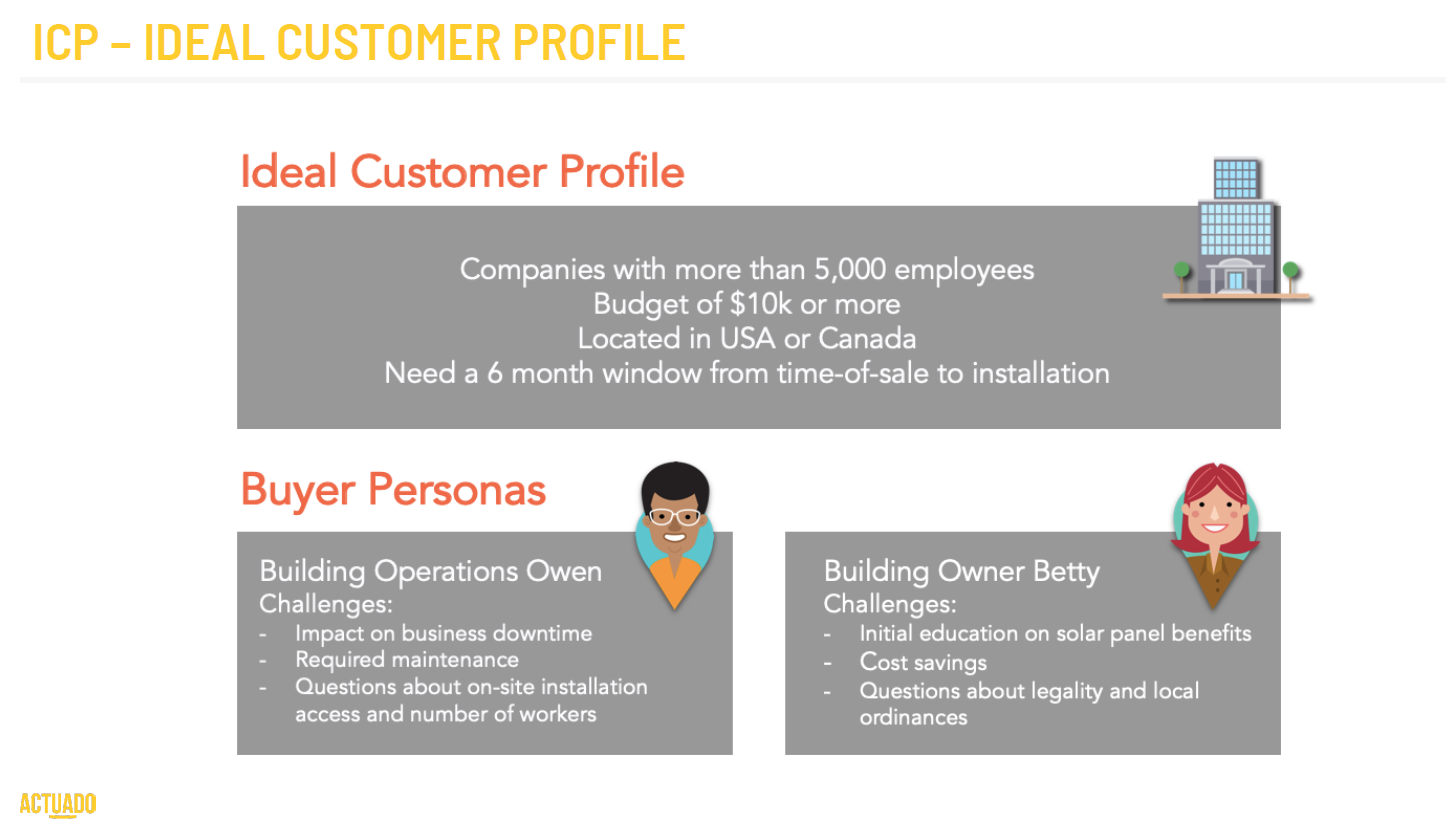
How to start with ABM?
Before you start with account-based marketing, you need to determine if your company is willing to invest the required time and resources. Then, you structure an ABM team that should include at least one person from marketing and one from sales. Each salesperson should be responsible for a maximum of 10 accounts.
The next step is to create a list of high value companies you want to pursue. These can be specific companies that you already have in your CRM, or you can identify them by breaking them down into segments based on size, location, and other relevant characteristics.
Marketing and sales must work together to create an action plan: Define the goals, the content and channels to reach your target companies. The next step is to attract contacts from these target companies with personalized content that addresses the pain points or challenges of people with different buying roles. Your goal is to build strong relationships with the target account’s buying committee. You should continuously monitor, measure and analyze your results and make appropriate corrections if necessary.
You can use the inbound marketing approach in each of these steps.
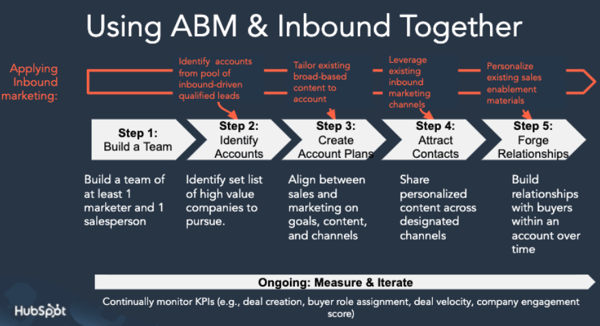
Examples of tactics we use in ABM:
- Personalization of advertising channels for a single company or stakeholder (e.g. targeting people from specific companies or industries on LinkedIn),
- Creating of custom web content (landing pages, micro sites, chatbots, video content, email...)
- Creating custom content to support sales (personalized demos, video content, custom price lists, architecture diagrams)
- Offers of high value (exclusive events aimed at a narrow segment of specific customers, gifts).
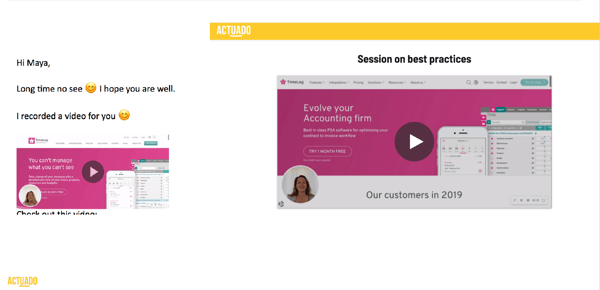
Developing an ABM strategy
When you’re developing an ABM strategy, you must first have a good understanding of the target company: its business, its motivations and objectives, its vision and mission, its markets, its key activities, its sales process, its internal policies, its competition, etc. You also need to know the history of your mutual relationships – who from within the company you have already had contact with and in what way.
Collaboration between marketing and sales is essential for the development of a concrete action plan. The two departments must define the target companies together. Marketing provides the contacts and their data, while sales identifies the buying roles. Marketing creates the content, sales qualifies the leads. Marketing nurtures the contacts with content that is tailored to each stage of the buying journey and to the individual buying roles. Sales, which is usually in closer contact with the target company, provides marketing with information about the individual roles in the company, decision-making criteria, risk factors for losing a client, and so on. Marketing, on the other hand, supports sales with content for the final stage of the buying journey.
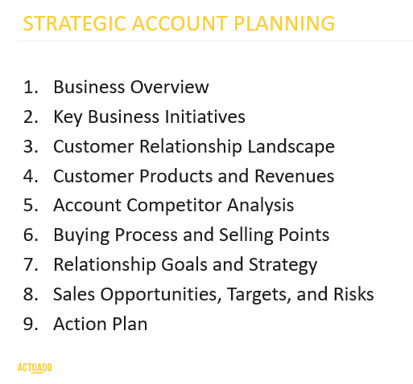
ABM in HubSpot
This year, HubSpot started offering an ABM platform in their "Pro" packages, but of course they are not the only providers of such a platform, the choice is huge. HubSpot provides an excellent foundation for the Martech stack, which can be upgraded with various integrations as needed. The key is to have all the information about a single account in one platform, so that you can monitor and adjust all activities and commitments.
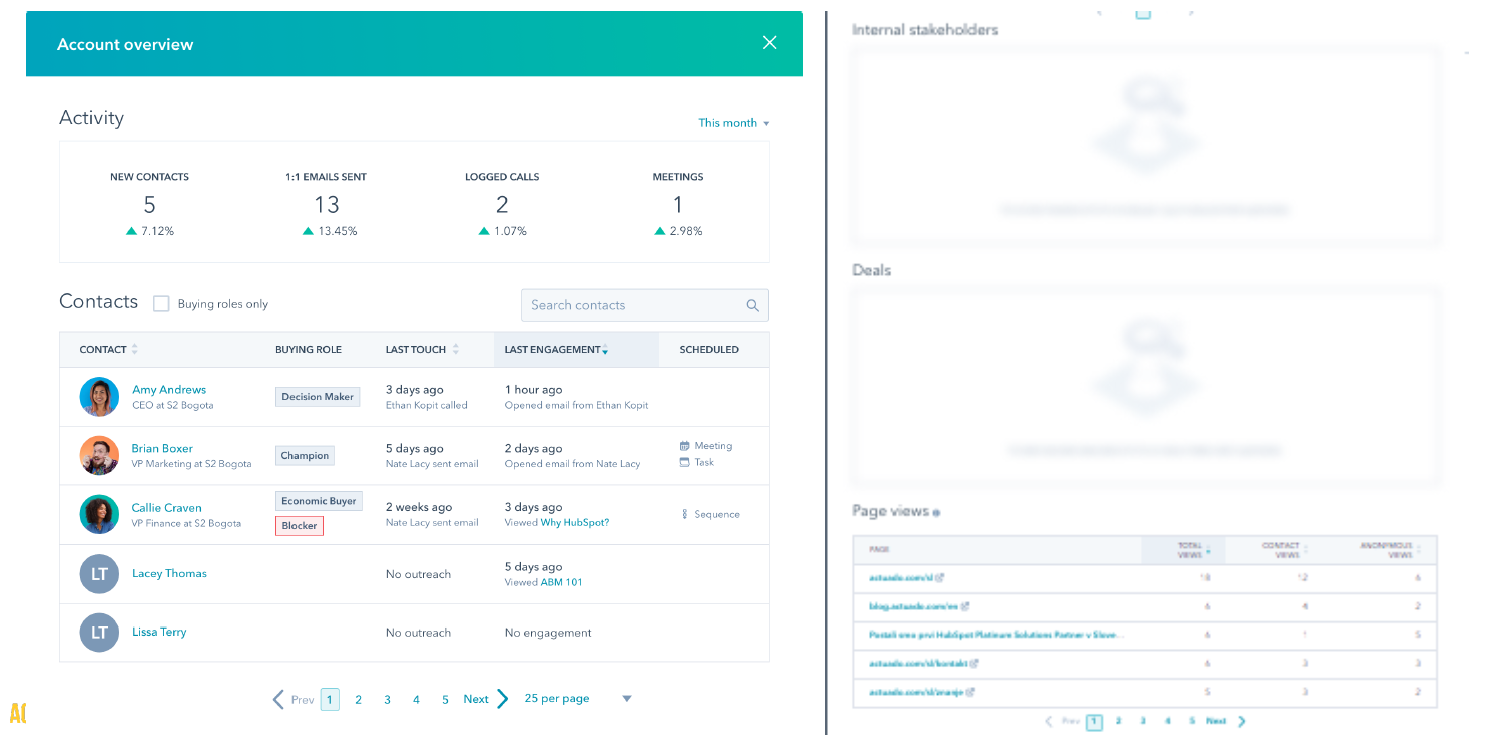
In HubSpot, you identify who your key accounts are by assigning them the ‘target company’ property. Additionally, you can assign a ‘buying role’ property to individual contacts from the company. You can create lists from these company and contact properties and use them for marketing automation – you can send them marketing and sales emails with customized content by using workflows. You can track the history of relationships with an individual company: how often and have you been in contact with someone from the target company, and how they have interacted with you (have they read your email, visited your website, downloaded your e-book, etc.) You also see an overview of the deals you have won.
With HubSpot analytic tools, you can make a much more informed selection of your key accounts. Analytic tools also help you create more personalized and therefore more relevant and effective content.
Another interesting feature of HubSpot’s ABM tool are Recommendations: With the help of AI, HubSpot makes suggestions about other companies that could be added to your key accounts list according to various criteria such as company size, industry, and previously defined key accounts.
Benefits of account-based marketing
From the very beginning, the ABM strategy requires that the marketing and sales department align and focus on the same goals, which strengthens their overall cooperation. ABM also helps us streamline our sales cycles by focusing exclusively on the companies that are best suited to us, and we communicate only through the channels where we can reach them.
Just like inbound marketing, ABM puts the customer at the centre of attention and enables marketing and sales to communicate with meaningful content at all stages of the buying journey, providing customers with a better buying experience. Last but not least, the ABM platform we use enables us to measure ROI and the performance of each activity.
If you think that your company should start with account-based marketing and you need some advice, book an appointment in our calendar, we will be happy to help you!



